Fujifilm X-Pro3 Mirrorless Camera Review:
If you’re looking for something that feels a bit more analog, and also gives you that rangefinder feel but you don’t want to necessarily drop $7-8k for something from Leica, then the Fujifilm X-Pro series might just be what you’re looking for. In a sea filled with APS-C mirrorless cameras from tons of manufacturers, I feel the X-Pro cameras have always had a special place because they are a bit unique. For instance, there’s that great hybrid viewfinder. There are features like the manual controls, and as I mentioned earlier, the rangefinder-styled design. With the release of the Fuji X-Pro3, the overall character is the same but now, there’s more tech and capability.
Fujifilm X-Pro3 Mirrorless Camera Build Quality:
In terms of build quality, the Fuji X-Pro3 is excellent. It really does feel like a camera from the past, which to me, is a good thing. The X-Pro3 has a solid feel to it, and it still is one of the better built cameras in the Fuji X Series system. The frame is made of magnesium alloy with the top and bottom plates being made of titanium, which is a first for a Fujifilm digital camera. So, you not only have a nice, solid structure, you also have one that is lightweight as well.
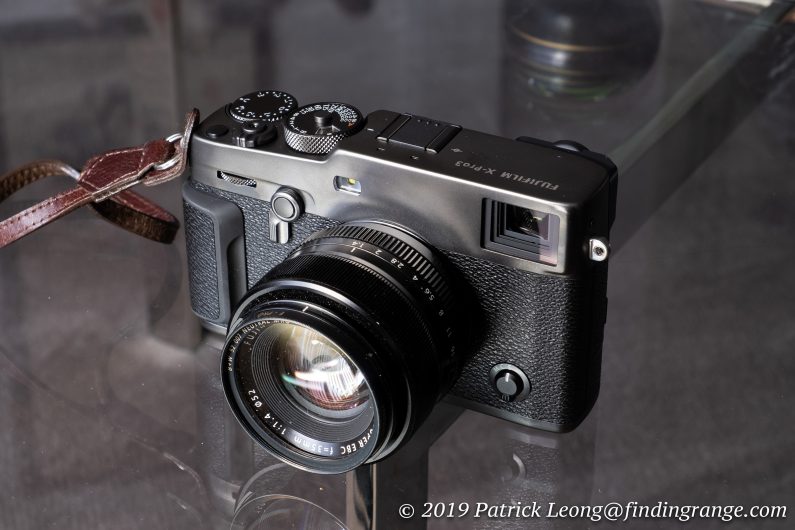
↑ Here’s the Fuji X-Pro3 with the XF 35mm f1.4 R lens.
As for the finish, you can get the Fuji X-Pro3 in the traditional black but you can also get it in two other finishes as well: Dura Silver, and Dura black, which is what you see here. What are the Dura finishes you might ask? Basically, if you buy one of the Dura finishes, a Duratect coating is applied to make the camera even more durable from scratches. The Dura silver version keeps the natural titanium color while the Dura Black version is a combination of the bare titanium texture with a dark finish.
If you choose to purchase an X-Pro3 with a Dura finish, the list price does rise from $1,799 to $1,999 but if you ask me, it’s well worth the extra $200. The Dura finishes look absolutely beautiful. I’ve never really been a fan of the look of X-Pro series of cameras but the new finishes make them look a lot better to me. They really add a bit of style, and elegance to the camera. That’s my personal take, of course. The only issue that I’ve encountered with the new finishes is how easily they can pick up oils from your hands. In other words, finger prints get on it quite easily, and they do take some effort to remove. Still, the finishes are beautiful, and again, well worth it in my opinion.
As for other features, I’m sure many of you already know by now that Fujifilm X Series cameras are famous for their great manual controls. Anyone who misses the days of film will probably feel right at home with a camera like the X-Pro3. There are dials for shutter speed, ISO, and EV compensation on the top plate of the camera. Of course, the lenses also, for the most part, have aperture rings to further add to the analog feel. Getting back to the Fuji X-Pro3, this camera truly feels like a rangefinder. The viewfinder is on the side of the camera, and the dials click solidly into your chosen positions giving you that impression that you’re using a film camera from the past. In addition, these types of controls are just plain out straight forward, and easy to manipulate, which makes shooting quick and second nature.

↑ The top plate of the X-Pro3.
Adding further to the analog-like goodness is the hybrid viewfinder in the Fuji X-Pro3. This viewfinder system definitely makes the X-Pro3 unique in its class. You have a traditional optical viewfinder with 0.5x, which is bright and clear. It’s decent, and great for those who prefer OVFs but these days, I’m more of an electronic viewfinder kind of guy, especially with how good they are getting. All I have to do with the X-Pro3 is flip a switch, and I’m instantly using a 3.69m-Dot OLED EVF, which is excellent in its own regard. It’s bright, clear, and the colors are great. In fact, I pretty much used just the EVF the entire time I had the X-Pro3 to review. I felt it offered a better experience than the OVF for me, of course, and the quality was definitely up their with its competitors.
The Fuji X-Pro3 also comes with a hidden 180° tilting touchscreen that has a 1.62m-dot resolution. In front of the main display, there is a smaller display that can show your current film simulation mode, ISO, and white balance. It’s suppose to be like the cardboard flap from a film box that one would slip in a slot behind an old film camera. I think this idea is kind of cool :). As for the main LCD display, it is brilliant: it’s bright, sharp, and the colors are displayed beautifully. I have absolutely no complaints about the screen quality at all. I am just not a fan of the hidden screen, which is a new feature in the X-Pro line.
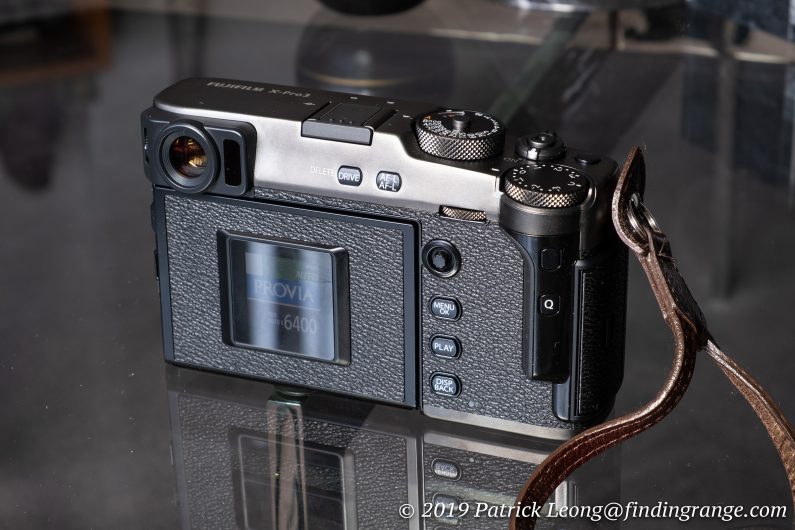
↑ The back of the X-Pro3 with the main LCD display folded up.
So, according to Fuji marketing, having the screen hidden encourages a more traditional shooting style by getting photographers to concentrate on composing using the viewfinder. The X-Pro3 wants you to trust your instincts as a photographer, and shoot without the distraction of checking every image. I think this is one of the more controversial features, and for some, this may be something that they would want or even love. I’m in the other camp: truthfully, I find it almost a bit gimmicky. In actual shooting, it breaks my rhythm a bit, which slows me down.
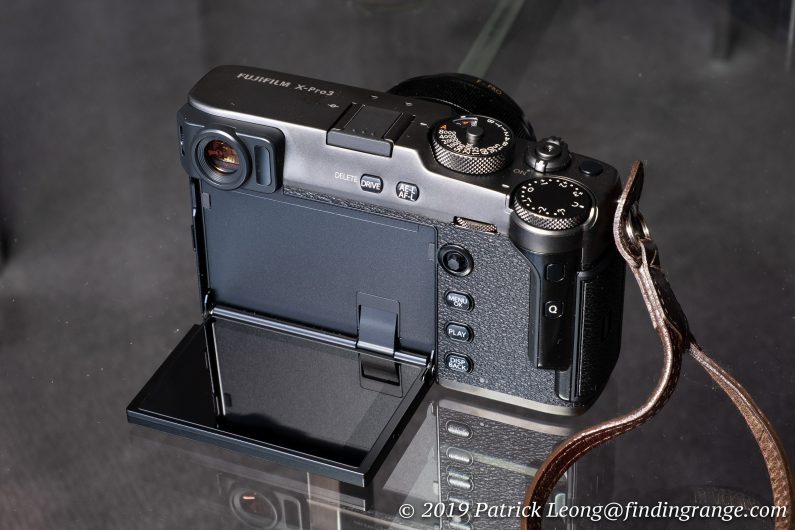
↑ The main LCD display.
It’s not even about having an easier time looking at the image or even chimping; yes, I do check my images, especially during a model shoot. I definitely do not want to go back home, and find the images did not come out the way I wanted them to come out but I can live with the inconvenience of flipping the screen down each time to check my images during a break. The thing is though, this is a digital camera, and a lot of settings are adjusted with the menu system. Yes, I can use the EVF, which is what I did but that’s not always convenient. Furthermore, depending on how you mount your camera to your tripod, you may have an issue with folding down the screen.
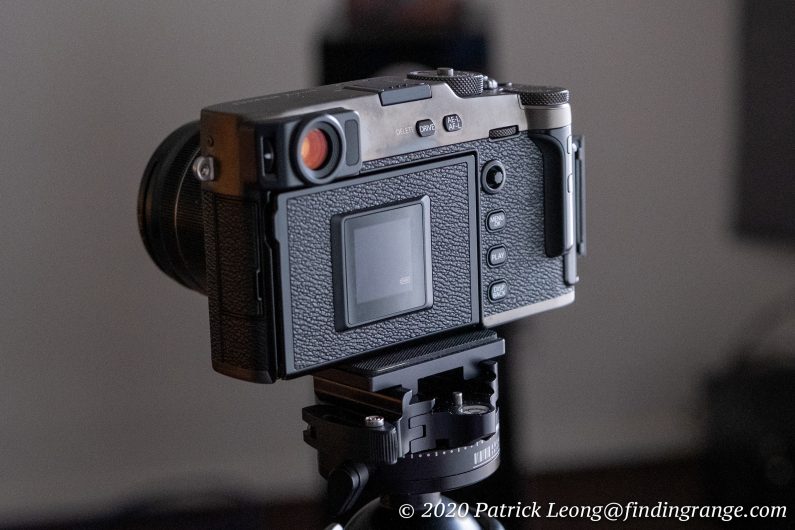
↑ The folding LCD display may have some issues depending on your tripod mount.
I think a better idea would have been to create two X-Pro3 bodies kind of like what Leica does with its M camera (M10 and M10D). To me, it’s just a bit too controversial putting this feature in a flagship camera. Another idea would be to use the display design from the Fuji X-T4. I just finished reviewing that camera, and the display would be perfect for the X-Pro3. I realize some might love the LCD display on the X-Pro3, and I’m NOT here to rain on anyone’s parade. I fully respect that, and as I always say, to each his own. But in practice, I really felt like the LCD design made it a little more inconvenient to shoot, and I always want to be honest when I’m writing these reviews.
With all that said though, it’s not something that would stop me from purchasing an X-Pro3 because first off, I’m sure some will love this feature, and second, there’s just so much to love in general from the new Fuji X-Pro3. You’ll see, as you read further below :). Plus, I think Fujifilm does deserve credit for being brave enough to add such a feature that let’s be honest, is a bit controversial, in one of their flagships no less. I feel like they were thinking outside of the box too, which is what I like to see from manufacturers. There’s so much great stuff out there these days but often times, I feel like so much is so similar; it’s good to see a feature that does further help differentiate a camera design. I may not be a big fan of this particular feature but I definitely respect it, and those who love it.
Fujifilm X-Pro3 Mirrorless Camera Autofocus:
As for the autofocus, the Fuji X-Pro3 is up there with the best in its class. For those who owned or still own an X-Pro1, they will be quite frankly, shocked at the improvement. It’s like having a race between a bicycle and a race car ;). In terms of the technical stuff, the X-Pro3 has a phase detection autofocus system, which has 425 selectable points that cover almost the entire sensor. The camera is also capable of taking shots with the minimum luminance of -6EV, which is close to total darkness.
In other words, the autofocus is excellent. The autofocus also depends on the lens that you select but with the ones that I’ve used, it has been extremely fast, capable, and accurate. I’ve had absolutely no issue whatsoever with it. In fact, it’s so good that there’s really not much else to say about it.

↑ The settings here were 5000 ISO, and f6.4 using the 22mm focal length of the XF 16-80mm.
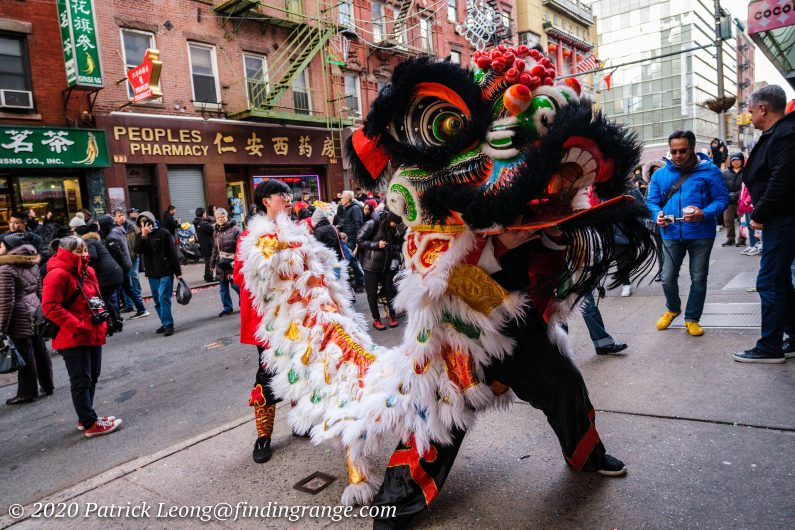
↑ These performers were moving very fast but the autofocus locked on without any issues. The settings here were f4, and 1600 ISO using the 16mm focal length of the XF 16-80mm.

↑ The settings were f5.6, 1600 ISO, and 16.5mm from the XF 16-80mm.
For those who have some of the older generation lenses like I do, the X-Pro3 does perform better with those lenses than previous X-Pro cameras. I mentioned this as well with the X-T3 in that review. The autofocus is quicker, and the camera just feels more sure of itself. I own three Fuji X mount lenses, and they are the XF 18-55mm, the XF 35mm f1.4, and the XF 56mm f1.2 APD. I also own a Zeiss Touit 12mm f2.8. As some you know, the XF 35mm f1.4, and the XF 56mm f1.2 APD have always been lenses with slower autofocus capabilities. The XF 35mm f1.4 has been vastly improved thanks to firmware updates but it still doesn’t measure up to the XF 35mm f2 in terms of autofocus speed. However, like the X-T3, the XF 35mm f1.4 and the XF 56mm f1.2 APD perform much better on the X-Pro3.
As for the Face Detection AF, the performance is just spectacular. I used it a lot during some of my portrait shoots, and I find it to be superb. The face detection AF locks on with such a tenacity, and it does so very quickly. There was a lot of hype about the Face Detection AF from these newer Fuji cameras, and let me just tell you right here that all of it is true.
Fujifilm X-Pro3 Mirrorless Camera Image Quality:
Let’s talk about image quality now. The X-Pro3 uses the 26 megapixel X-Trans 4 sensor, which is also found in many other camera models like the Fuji X-T4. It’s a back-illuminated sensor for improved light receiving performance. Thanks to the lack of a low-pass filter, and those great X Series lenses, images produced have plenty of detail in them. Dynamic range is also great, and noticeably improved over the X-Pro2. I find it easier to recover highlights, and there’s also more detail retained in the shadows. Color and contrast rendering are also excellent; of course, this should come to no surprise given how many fans of the Fujifilm system talk about the beautiful colors. I feel in this area, there is definite improvement when compared to the older sensor in the X-Pro2. Overall, the X-Pro3 produces excellent images, and it definitely has no problem competing with the top cameras in the APS-C mirrorless class.

↑ This was taken at 160 ISO with the XF 35mm f1.4 R lens at wide open aperture.
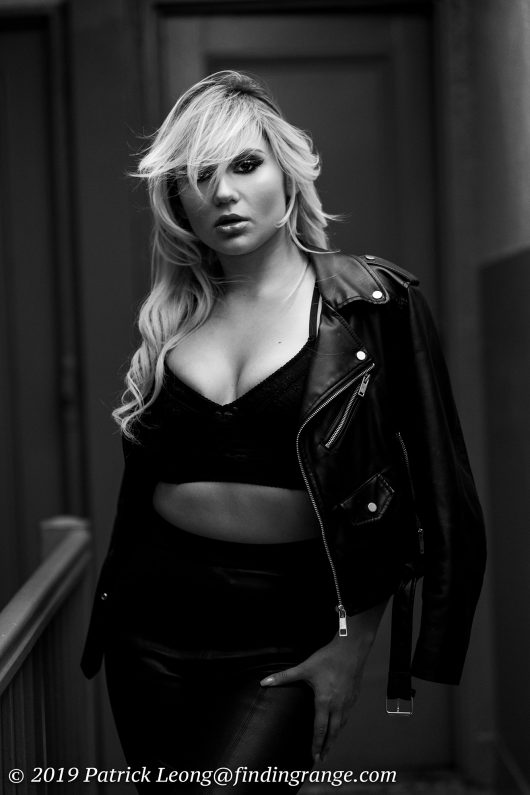
↑ This was taken with the XF 56mm f1.2 R APD lens at 1250 ISO using wide open aperture.

↑ The settings here were f5.6 and 1000 ISO. I used the 43mm focal length from the XF 16-80mm.
As some of you know, I am a RAW shooter, and there isn’t a time when I don’t shoot RAW. All these images were edited from RAW files. However, if you don’t want to bother with these types of files, you don’t have to because like the rest of the Fujifilm X series line of cameras, the X-Pro3 produces superb out of camera jpegs. The X-Pro3 uses the film simulation modes, and there’s definitely enough of them to satisfy most users if not all. My preference has always been the default one, which is Provia Mode.

↑ I used the 28mm focal length here from the XF 16-80mm, and the settings were 3200 ISO, and f5.6.

↑ I used f5.6, and 1600 ISO here. The focal length used was 36mm from the XF 16-80mm.
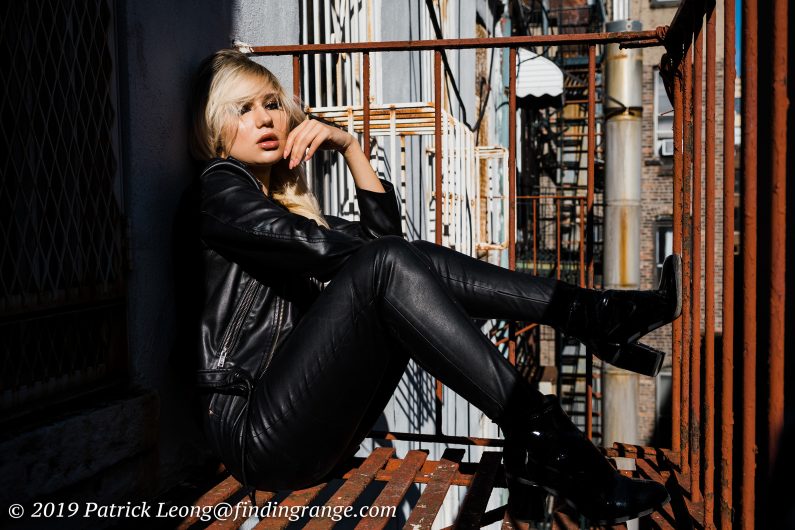
↑ I used the 24mm focal length here from the XF 16-80mm. The settings were f4 and 160 ISO.
Let’s talk about high ISO capability now. As with past Fujifilm models, the Fuji X-Pro3 produces excellent high ISO images. Like the X-T3, I still feel like this new sensor produces slightly noisier files than the older sensor; however, the trade off when it comes to color and contrast, and the increased flexibility in the files overall when editing RAW, is well worth it. Plus, like I said, the files are only slightly noisier.

↑ This was taken at f4, and 1000 ISO using the 36mm focal length from the XF 16-80mm.

↑ This was taken with the XF 16-80mm again. I used this lens a lot because I was reviewing it at the time. This was shot with the 29mm focal length at f5.6 using 1250 ISO.

↑ The XF 35mm f1.4 R was a first generation lens but to this day, it’s still one of my favorites: this was taken at f1.4 with 320 ISO.
So, with all that said, here’s what I found concerning the higher ISO settings. With 1600 ISO, there is some noise creeping in but nothing that’s out of the ordinary. You should have no problems shooting at this setting. At 3200 ISO, you’ll notice more noise but detail is still very high. Color rendering is still great in my opinion. 6400 ISO is where you’ll definitely see more noise but I feel like I still can get great results. In general, I don’t see many issues using this camera up to 6400 ISO. Obviously, as you increase the ISO, you’ll get all the negatives that comes with it like with any camera but for the most part, the images are all completely useable.
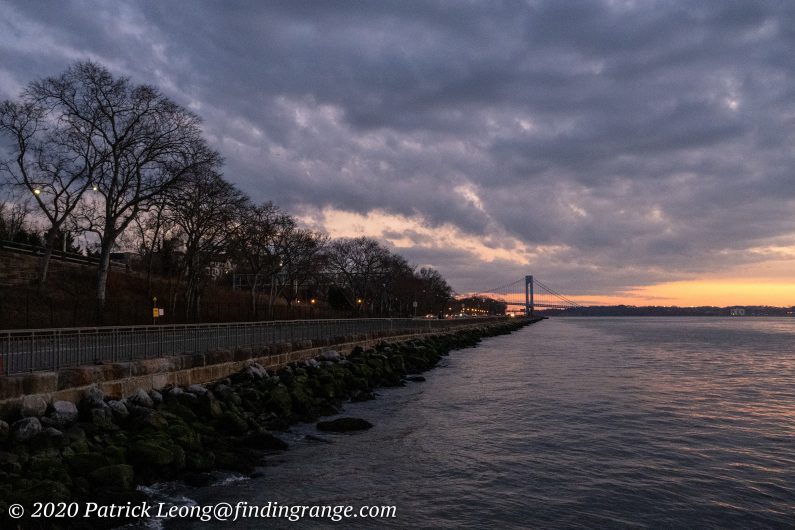
↑ Here’s an example taken at 6400 ISO. I used the 16-80mm here set at 21mm and f5.6.
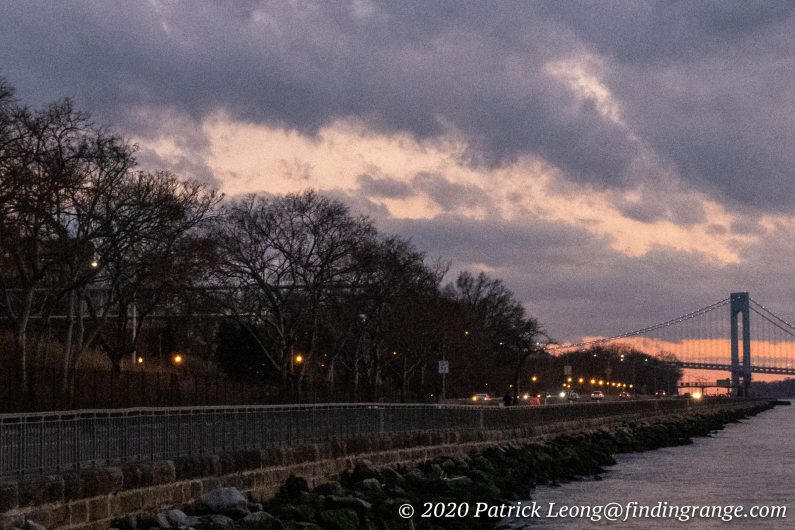
↑ Here’s a 100% crop of the photo above.

↑ Here’s another sample at 6400 ISO. This was also taken with the XF 16-80mm at 28mm.

↑ Here’s a 100% crop of the photo above.
When you go pass the 6400 ISO mark, that’s when things get noticeably noisier, and where there are more color issues. 12,800 ISO is an example but with that said, you can still get usable images depending on your subject matter, and exposure. 25,600 ISO and up, I’d only save for when I absolutely need those settings.

↑ This was taken at 12800 ISO with the XF 16-80mm set at 16mm and f7.1.
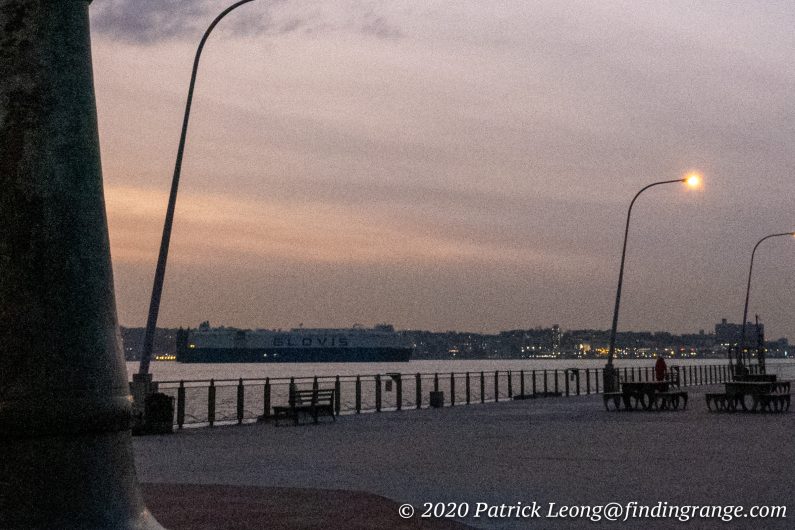
↑ Here’s a 100% crop of the photo above.

↑ This was taken at 25600 ISO with the XF 16-80mm set at 25mm and f5.6.

↑ Here’s a 100% crop of the photo above.
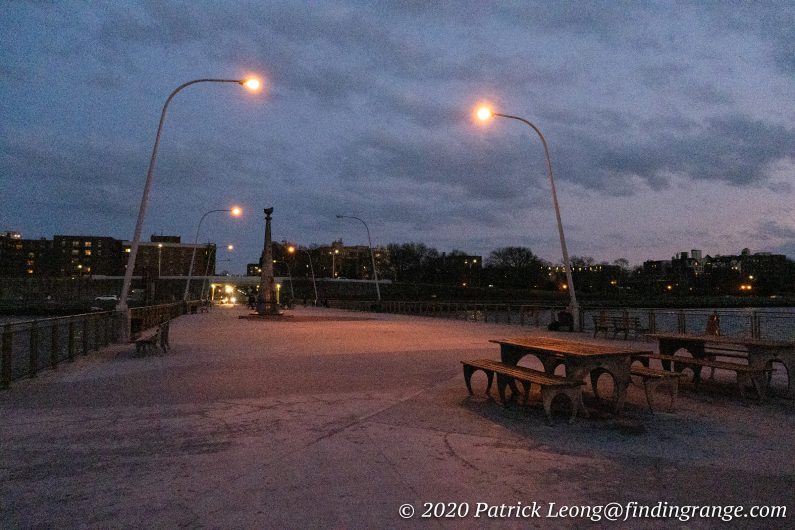
↑ This was taken at 51200 ISO with the XF 16-80mm set at 16mm and f5.6.

↑ Here’s a 100% crop of the photo above.
The X-Pro3 does video as well. It records in 4K at up to 30 fps and 200 Mbps. There is a recording limit for 4K, which is 15 minutes. There’s also 1080p at up to 60 fps, and you can record for approximately an hour each time.
Fujifilm X-Pro3 Mirrorless Camera Pros And Cons:
- Well-made and built to handle professional use.
- Compact and manual controls make this a really fun and straight forward camera to use.
- Love the new Dura finishes.
- Weather sealed.
- Great hybrid viewfinder: best of both worlds.
- Impressive electronics.
- Fast autofocus.
- Excellent image quality.
- Great out of camera jpegs that require little to no editing.
- Excellent high ISO capabilities.
- Great selection of lenses.
- A camera with character.
Fujifilm X-T3 Cons:
- Would like a larger battery.
- No in-body image stabilization.
- The LCD display is either a love or hate thing depending on the individual.
- Dura finish costs a bit more.
- For the price, there are full frame camera options.
Fujifilm X-Pro3 Mirrorless Camera Verdict:
While fans of the X-Pro line had to wait some time for a new camera to arrive, I believe it was well-worth the wait. The Fuji X-Pro3 is a fantastic camera, and there’s quite a bit of improvement here when compared to its predecessors.

↑ This was taken with the XF 35mm f1.4 R lens at f1.4 using 160 ISO.

↑ The settings here were f5 and 640 ISO. This was taken with the XF 16-80mm.
Of course, it’s not perfect. For instance, I think the LCD display is either a love or hate thing. As I mentioned earlier, I’m not a particular fan of it, and now that I’ve used the Fuji X-T4, I’m wondering why Fujifilm just didn’t go with that LCD display design instead. Furthermore, while the X-Pro3 does shoot decent video, it wouldn’t be my main choice to shoot any video. For one, there is no image stabilization. Also, the LCD display might have issues folding down depending on your tripod mount.
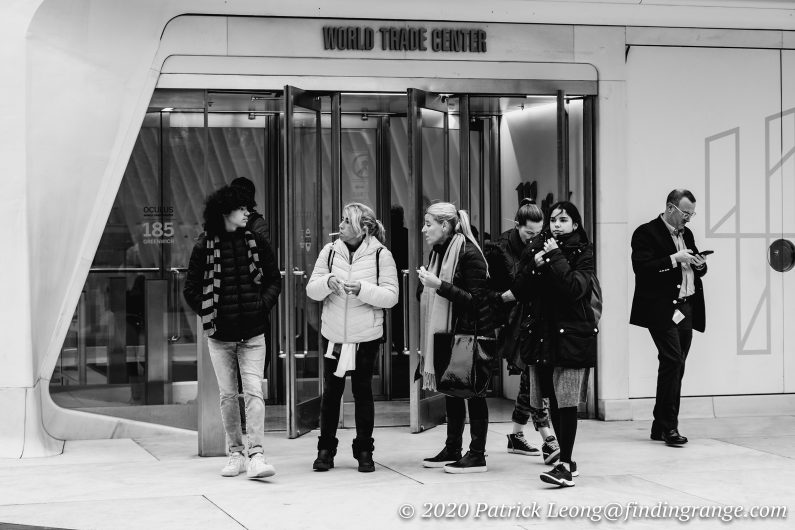
↑ This was taken at f4, and 250 ISO using the 51mm focal length of the XF 16-80mm. Black and white conversion done in Camera Raw.
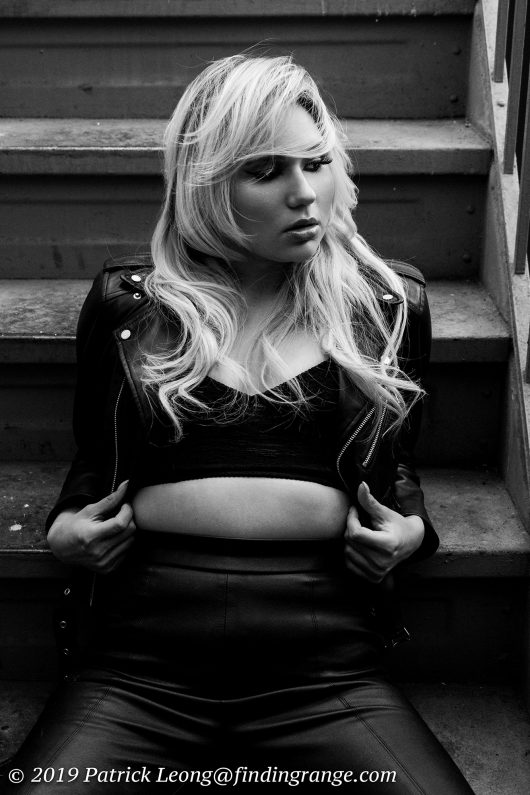
↑ The settings here were 6400 ISO, and f4 using the 34mm focal length from the XF 16-80mm.
With all that said, there is still quite a lot to love, and truthfully, even though I’m an X-T user, I think I kind of like this one over the new Fuji X-T4. What’s great about this camera is that overall, the key traits that have defined this Fujifilm line of cameras have not changed. If you want that rangefinder-like feel but you don’t want to fork over thousands of dollars for a Leica M, this is pretty much as close as you can get to that experience. Unlike a Leica M, The X-Pro3 is also autofocus. Plus, it has a hybrid viewfinder, which still hasn’t lost its cool factor, if you ask me even though it came out many years ago.

↑ The settings here were f5.6, and 500 ISO using the 16.5mm focal length from the XF 16-80mm.

↑ The settings here were f4 and 320 ISO using the 31mm focal length from the XF 16-80mm.
Of course, be prepared to pay for this uniqueness. The X-Pro3 isn’t cheap, especially if you go for one of the Dura finishes. In fact, you’re right in the price range of say a Nikon Z6, Canon EOS R or a Sony A7iii, which are all full frame by the way. With that said, there is so much that goes into buying a new camera; everyone is different, and has different needs. I believe the X-Pro3’s rangefinder-like design, handling, and feel help it stand out not only from these cameras I’ve just mentioned but also from a market jam packed with APS-C mirrorless cameras.
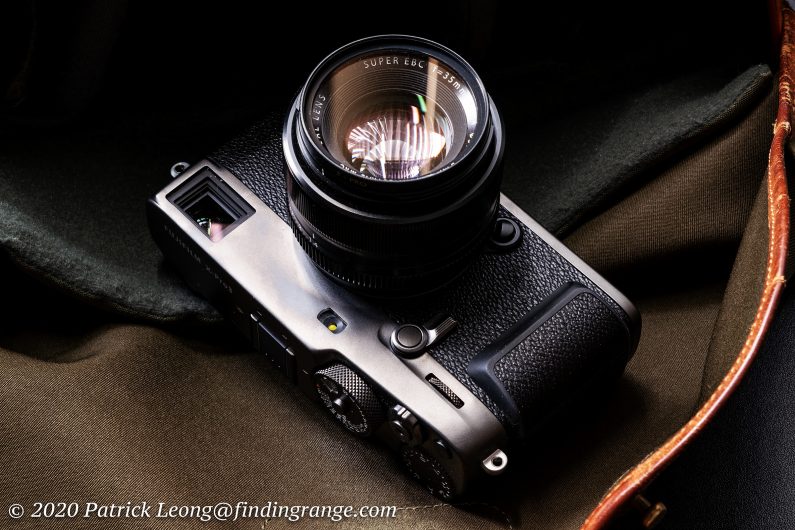
↑ One more shot of the X-Pro3 with the XF 35mm f1.4 R lens.
When you combine it’s form factor with its electronics, and those great Fujifilm lenses, you have something that to me is quite an excellent option. These days, all digital cameras in general are pretty good but some can make you feel a bit detached. If you’re looking for a camera that will make you feel like you’re fully involved in the entire photographic process, and quite frankly, has a little bit of character, then look no further. The X-Pro3 is one of these types of cameras, and with its rangefinder-like feel and design, you might just fall in love with photography all over again.
Thanks for taking the time to read my review! If you’re considering purchasing the X-Pro3, and my review helped you decide, please help support this site by purchasing from the link below or any mentioned in this review. It will not cost you anything extra. Thank you for your support!

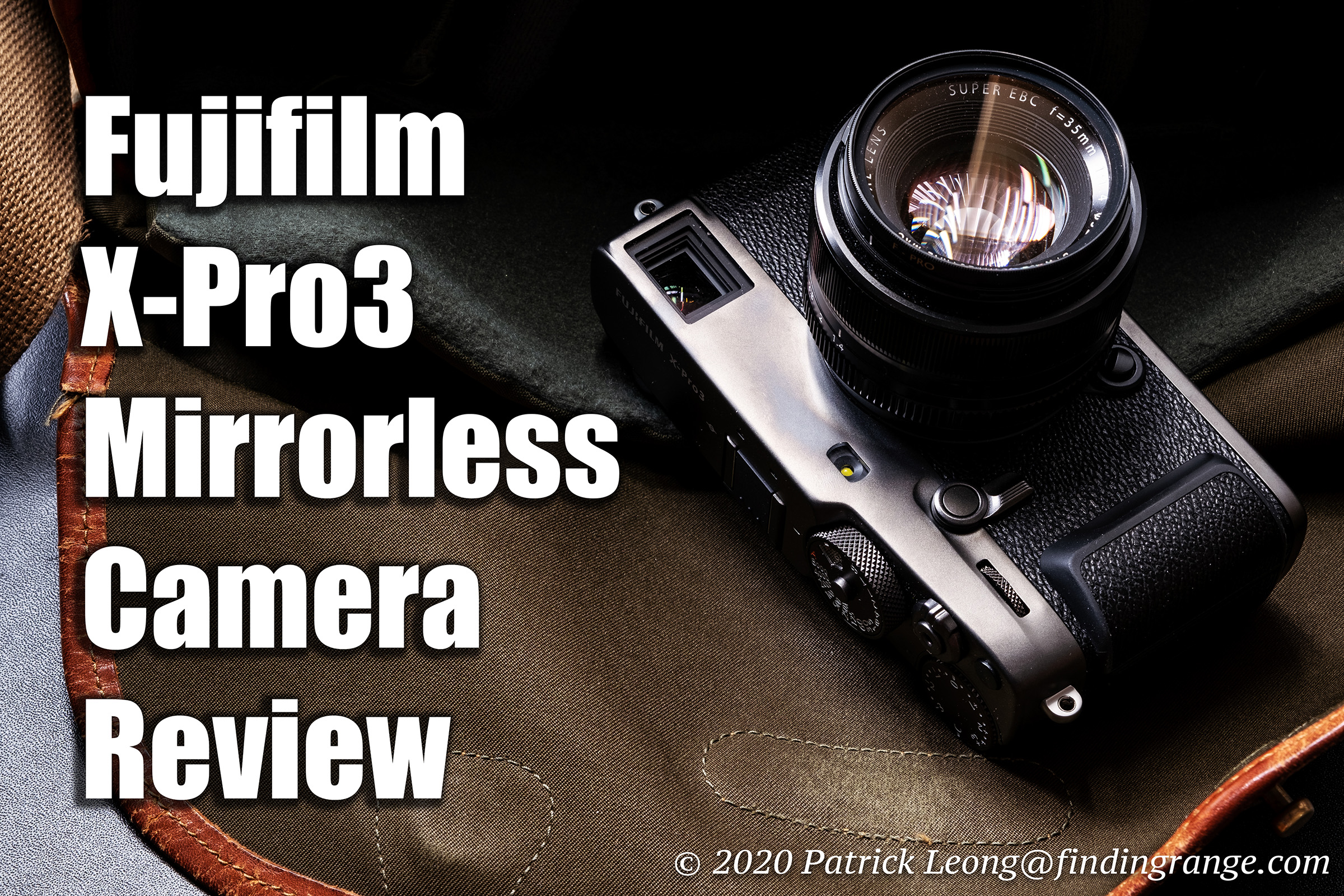
Hi Patrick,
Thanks for posting. As usual a very well written review. I currently have and use a Pro 2 which I love. Just in case, I have a Pro 1 in the closet. If either of them bites the dust I guess I’d get a Pro 3. Right now the only reason would be so I have the complete series. Not a good enough reason to drop close to $2000.
Keep well, keep safe,
Steve
Hi Steve,
Thanks for the kind words! The X-Pro2 is a great camera, and if you’re happy, there’s definitely no reason to buy another. Stay safe as well and keep shooting!
Best,
Patrick
I enjoyed your write up. There are some real interesting updates I am OK with the flippy screen but I am very concerned about the missing D-Pad But I too have an X pro2 and am really not sure about dropping 2K for an X Pro3. Finally for $2,000.00 you should get a battery charger!!!!!
Hi John,
Thanks for taking the time to read it. It’s always great to hear from you!
Yes, I forgot, the D-pad is missing. It’s something that I wasn’t happy about either. As for the price, $2k definitely opens up a lot of choices. Nowadays, that puts you into full frame territory with a lot of different manufacturers. Still, I think the X-Pro3 has enough unique traits to be competitive. It’s a fantastic camera to use. As for upgrading, cameras these days are so good that there is no reason to trade up to the X-Pro3, if you’re happy with with you X-Pro2. It’s still an excellent camera. Yes, I was a bit bummed out that they did not include a charger haha. Thanks for stopping by, John. I hope you’re doing well!
Best,
Patrick
Hi Patrick,
Quite a surprise when I saw another Fuji X review, thinking it would probably be the X-T4, not the X-Pro3. Knowing your preferences for the XT line, I have to say that this is a very balanced & fair assessment of this new XP body. Having gone from the X100, X100s, X-Pro1&2, I finally gave up on Fuji putting an articulating LCD on any new XP body, & bought the X-T3. I really like its LCD flex uses, but never really bonded with it due to my rangefinder background & preference for an optical finder. But I just got the X-Pro3 & have to say it ticks all of the right boxes for me, even with the hidden but folding LCD screen. It has really served to take me back to a film camera mode of working; much more deliberate & contemplative. Probably if I was did a lot of portrait work or even much work on a tripod, I might react differently. But on my tripod, I can still lower the screen to about 135 degrees, so close enough to the full 180 to be very functional.
And I really enjoyed seeing all of the good work you produced using the 16-80 lens, which gets good reviews. I only have the four Fujicron primes to keep my kit as small & light weight as I can, but if I even think about another zoom, then this would probably be my choice. And looking at the event you shot, the maskless bystanders & variety of locations, I assume that the images were made pre COVID, so I am glad that you were able to do this also. But many thanks for this honest opinion of the new hybrid rangefinder like camera. I really think that this hybrid finder is their greatest accomplishment which sets it apart from Leica even. Stay safe & healthy,
Jed
Hi Jed,
Thanks for the kind words, and it’s good to hear from you.
This review was actually suppose to be published in January but I never got around to it haha. So, all these photos were taken way before the pandemic hit NYC.
The X-Pro3 is a great camera. Even though I am not a fan of the screen, I enjoyed it quite a bit. I think though that the next time I buy a Fuji body, it might be the X-E4. I like the size, it comes with the EVF, and overall, the design is nice to me. But for now, I’ll be continuing to shoot with my X-T3 :).
Stay safe out there, and thanks for stopping by, Jed!
Best,
Patrick
I purchased the Xpro-3 Dura Black early on. I have not been disappointed, but it was a bit of a roller coaster ride when some people reported “white out” EVF issues. Either I was a lucky one, or the firmware update fixed the issue. So far so good!
I know with the XT-4 coming out, the Xpro-3 might get overlooked buy people with or without history with Fujifilm cameras. Frankly, if I could afford both I would jump on the XT-4. But I’ve come to realize it is wiser to shop for a camera that fits your needs. The Xpro-3 certainly meets most my needs. That said I’ve even managed to balance a 50-150mm with a 2X teleconverter on the Xpro-3! With a little cheat of a Gariz leather half-case it works find 😉
The XPro-3 is a great everyday shooter and/or street shooter. I don’t think I’d feel under equipped for any kind of photography with the Xpro-3.
I have not recently checked prices on the Xpro-3 vs. the XT-4. I’m sure that might become part of the equation, as would image image stabilization. I do own an XH-1, and as much as I love the camera, I’m not sure the stabilization aspect is all that useful for how I shoot. As I said people should buy for their particular needs.
Thank you for a great and accurate review.
Hi Jazz1,
Thanks for taking the time to read my review, and for your kind words! Apologies for the late reply.
I did not experience the white out issue either :). They probably fixed it, and if not, I’m sure Fujifilm will make it right with a future firmware update.
You are exactly right; it can be sometimes tempting to get the latest but I always say get the camera that fits your needs. The truth is, cameras are all so good these days. Something like an X-Pro3 should have no issue taking pictures in all areas of photography, as you have demonstrated.
As for image stabilization, it’s great to have but I never had an issue holding the camera steady. I just finished testing the X-T4, and while I love it, the image stabilization didn’t do anything extra for me with the way that I shoot. So, this will be the first time I have not upgraded to the next X-T camera (I am currently an X-T3 user). I think there are a lot of great features in the new X-T4; just not enough for me to fork over more cash haha. If I was a new user, it would be different.
I appreciate stopping by, and enjoy your new X-Pro3! Hope to hear from you again!
Best,
Patrick
I have had my X Pro 3 for about a week. Love the flip down screen, great for low wide angle shots. I had to do a work-around because of the missing D-Pad. The new Viewfinder is worth the cost of the camera. The OVF works just fine with the 23mm/50mm and 21mmVC/75mmVC combinations
Love all your reviews: Keep it Up. John
Hi John,
Thank you for the very kind words, and for taking the time to read my reviews! I greatly appreciate your support! Apologies for the late reply. I have a pinched nerve in my shoulder/neck area that has been causing me quite a bit of pain lately.
I’m glad you enjoy your X-Pro3. It’s a great camera overall. I feel like it’s a better update than the X-T4 to be honest. I hope you continue to enjoy it, and thanks for stopping by! Stay safe out there!
Best,
Patrick
Hello Patrick
Great review thank you. I have an X-Pro3 and love it, however I’m not one to spend a lot of time on a computer so shoot Jpeg. I love your pictures, the colours really pop, and I know you shoot in raw but can you give me some idea of what settings you ‘tweak’ to make your images look as good as they do. I’d like to replicate them to some degree using Fuji’s highlight and shadow tones etc. in camera.
Thanks again. Phil
Hi Phil,
Thanks so much for taking the time to read it! Apologies for the late reply by the way.
As for your question, I shoot everything in RAW. I use either Capture One or Camera Raw in Photoshop CC. I keep things simple for my reviews because not everyone wants a heavily edited photo in a review. So, I just tweak mainly the sliders on the “Basic” tab (shadows, exposure, highlights, etc.) to my liking. Sometimes I’ll add a little clarity but it depends on the image. I don’t mess too much with the curve unless I’m in the mood. Sometimes, depending on the shot, I’ll tweak the sliders under the “Color Mixer” tab but I don’t like messing with this too much for review pics.
Let me know if this helps. Thanks again for stopping by!
Best,
Patrick
Brilliant review. I will save up for one of these.
Thank you so much, Gerard!
I appreciate your kind words, and thanks for taking the time to read my review!
Best,
Patrick